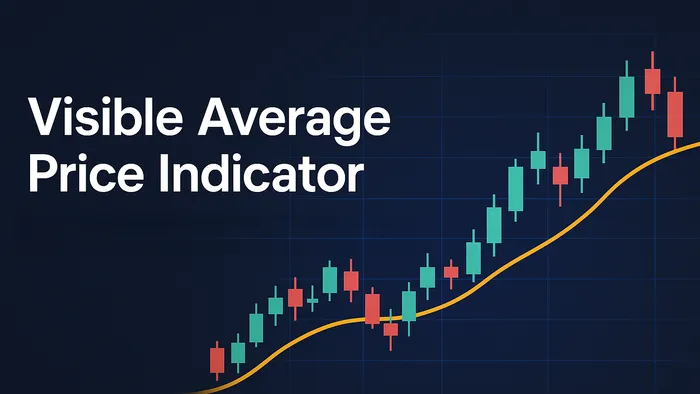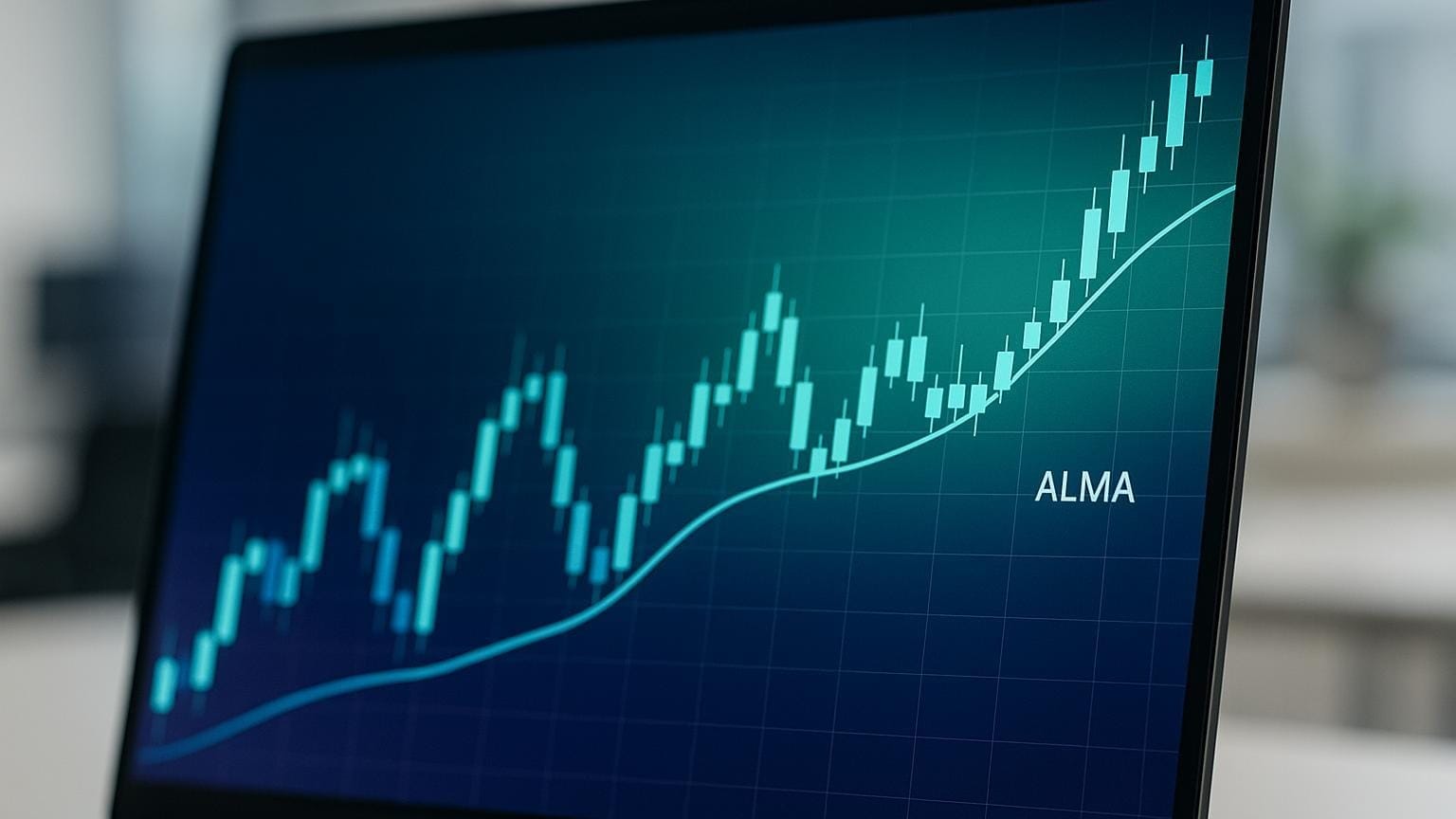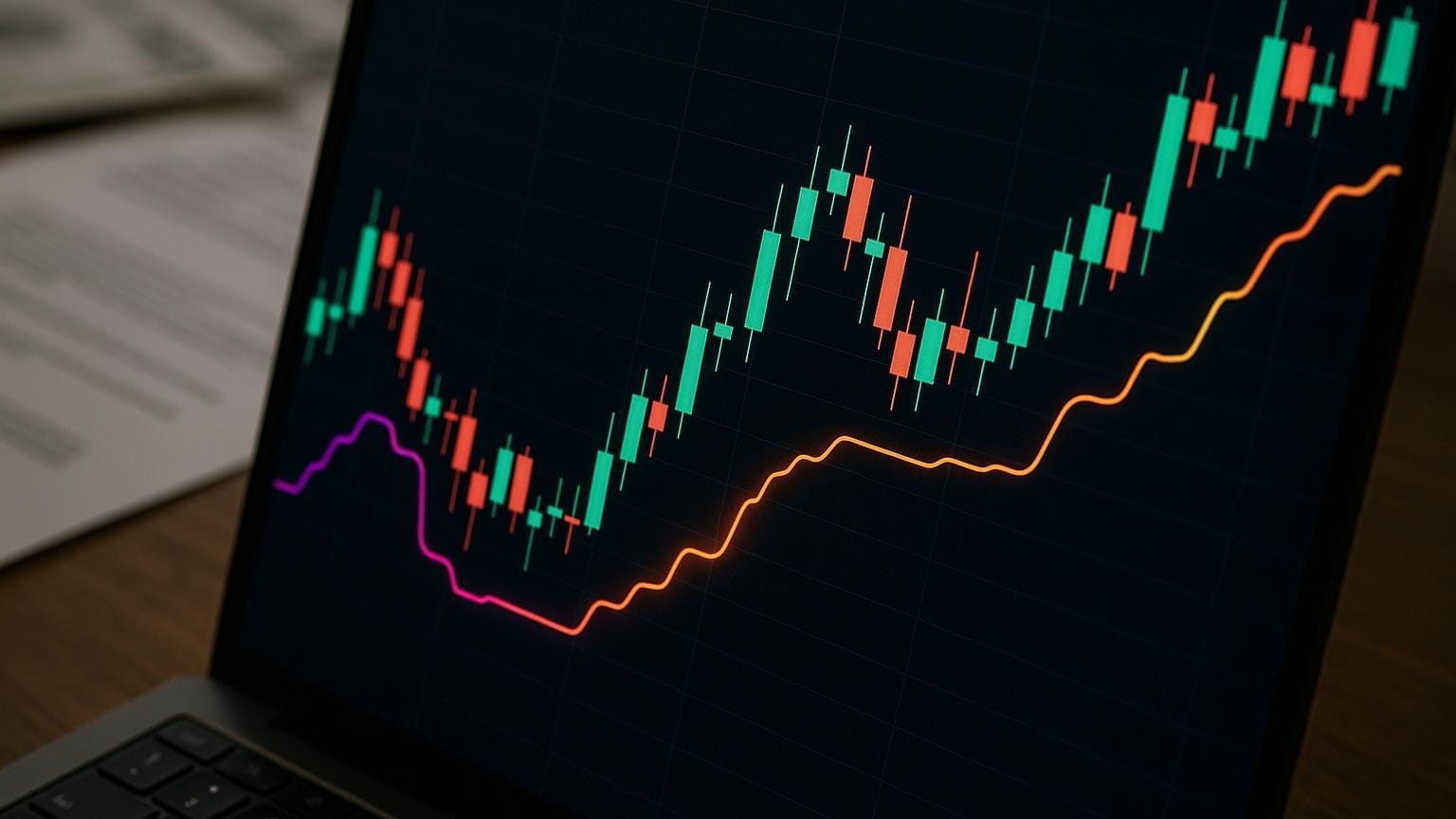Explore the dynamic capabilities of the Visible Average Price Indicator, a powerful tool for intraday traders to analyze short-term trends effectively.
The Visible Average Price Indicator calculates the average price of only the bars visible on your chart. Unlike fixed-period moving averages, it dynamically updates as you zoom or pan, providing a real-time view of price trends specific to your current chart display. This makes it especially practical for intraday traders analyzing short-term price movements.
Key Features:
- Calculates average price using visible candlesticks (based on HLC/3 or HLOC/4).
- Automatically updates when you zoom, scroll, or adjust your chart.
- Highlights short-term trends and acts as a dynamic support/resistance level.
- Works seamlessly with platforms like TradingView and solutions from LuxAlgo.
Advantages:
- Focuses on the current chart view, removing irrelevant data.
- Ideal for spotting short-term trends and timing entries/exits.
- Helps identify support and resistance in active markets.
Limitations:
- Ignores broader price history, which may miss critical context.
- Less effective for long-term trend analysis.
- Can be inconsistent across different chart views.
This indicator is perfect for traders looking to analyze visible price data quickly and efficiently, especially during volatile sessions. Pairing it with other LuxAlgo toolkits on TradingView can further refine your strategy.
Visible Range Volume Profile Updated and Explained: Tutorial
How the Visible Average Price Indicator Works
The Visible Average Price Indicator determines the average price of the bars currently visible on your chart. It dynamically updates as you zoom, pan, or adjust the chart's scale, ensuring the calculation always reflects the visible data.
Calculation Process
This indicator calculates the average by summing the selected price input (open, close, high, or low) of all visible bars and dividing that total by the number of bars in view. It recalculates in real time, making it especially handy for intraday trading where quick adjustments are key.
Setup Requirements
To use the Visible Average Price Indicator, you'll need a compatible charting platform, such as TradingView [1]. The indicator integrates directly into TradingView without requiring additional downloads. Once set up, you can fully customize the indicator to suit your preferences.
Configuration Options
This indicator provides several ways to tailor its functionality:
- Choose the price input for calculations (e.g., open, close, high, or low).
- Customize the display by adjusting the visibility, color, and thickness of the average price line [1].
These options allow you to adapt the indicator to your specific trading needs while maintaining a clean and organized chart layout.
Using the Indicator in Technical Analysis
The Visible Average Price Indicator is a versatile indicator that can enhance your market analysis when used effectively. Unlike traditional indicators tied to fixed time periods, this one adjusts dynamically to your chart view, making it especially useful in fast-changing market conditions.
Spotting Short-Term Trends
When the price moves above the visible average, it signals bullish momentum; when it dips below, bearish pressure takes the lead. What sets this indicator apart is its ability to recalculate instantly as you zoom in or out, ensuring it always reflects the current timeframe.
For day traders, this feature is particularly helpful during market open sessions—for example, the opening auction on U.S. exchanges—when volatility is at its peak. By focusing on the first 30 minutes of trading and observing how price interacts with the visible average, you can gauge early sentiment without being distracted by prior-session data. For context on the opening auction, see how opening auctions work on the NYSE.
Identifying Support and Resistance Levels
Beyond spotting trends, the Visible Average Price Indicator helps pinpoint critical price levels. It often acts as a dynamic support or resistance line, representing a balance point for visible trading activity. If price approaches this line from above, it might find support as traders defend positions. Conversely, when price moves up toward the line from below, it can act as resistance as earlier buyers look to exit.
This support/resistance behavior becomes even more noticeable in sideways markets. During these periods, the visible average often aligns with the center of the trading range, offering a reference point for potential reversals. The line can act as a magnet, pulling price toward it when momentum slows.
Timing Your Entries and Exits
The indicator also shines when it comes to timing trades. It provides clear signals for entering and exiting positions by highlighting value areas around the visible average.
For long trades, consider entering when price dips toward or slightly below the visible average during an uptrend, suggesting a potential return to the mean. Conversely, consider exiting when price repeatedly struggles to stay above the average, indicating fading momentum. Swing traders can fine-tune strategies by comparing multiple timeframes (e.g., daily and 4-hour charts) to align entries with both short- and medium-term trends.
Pros and Cons of the Visible Average Price Indicator
After understanding how the Visible Average Price Indicator works, let’s dive into its strengths and weaknesses. Like any trading indicator, it has its advantages and limitations. Knowing these can help you decide when it’s the right choice and when you might need to look elsewhere.

Benefits Over Moving Averages
One standout feature is its dynamic adaptability. Unlike traditional moving averages that rely on fixed periods, this indicator adjusts instantly based on the visible bars on your chart. Whether you’re looking at a 2-hour span or a full trading week, the analysis aligns with your current focus.
This adaptability is particularly useful for intraday traders. If you’re scalping during high-volume hours, the indicator recalculates based solely on the bars you’re analyzing. This approach eliminates noise from earlier sessions that may no longer be relevant, offering a clearer view of current market action.
Another strong point is focused analysis. For traders studying specific patterns—like breakouts or consolidation—it hones in on relevant price action. By ignoring unrelated data from other timeframes, it can yield more accurate support and resistance levels with breaks that reflect immediate conditions.
Now, let’s explore potential downsides that could affect your trading.
Drawbacks and Considerations
The indicator’s strength—its focus on visible bars—can also be its Achilles’ heel. By ignoring data outside the visible range, it risks missing critical context. For example, a support level that seems strong within the visible range might not hold up against the broader price history.
It also struggles with long-term trend analysis. Fixed-period moving averages often work better for trends that unfold over weeks or months. The Visible Average Price is geared toward shorter windows and can send mixed signals for long-horizon reads.
Another challenge is inconsistency across chart views. The average changes depending on how much of the chart you’re viewing. This variability can make it tough to apply consistent trading strategies or share analysis with others using different chart settings.
Finally, it can generate false signals in choppy markets. When only a few bars are visible, rapid swings can shift the average unpredictably, leading to whipsaws. Pairing it with a volume-weighted benchmark like VWAP can help validate signals.
Comparison: Visible Average Price vs Moving Averages
Here’s a quick breakdown of how the two approaches stack up:
| Feature | Visible Average Price | Traditional Moving Averages |
|---|---|---|
| Calculation Basis | Based on visible bars | Uses a fixed lookback period |
| Responsiveness to Chart | Adjusts dynamically | Remains static across timeframes |
| Best For | Precise, short-term analysis | Identifying long-term trends |
| Limitations | Overly focused on visible range | Can lag in volatile conditions |
Choosing between these often comes down to trading style. If you’re an intraday trader, the Visible Average Price’s ability to adapt quickly can be a game-changer. Swing and position traders may prefer the steadiness and big-picture context of traditional moving averages.
Using the Indicator with LuxAlgo on TradingView
Now that you’re familiar with the Visible Average Price Indicator and its capabilities, let’s look at how you can pair it with LuxAlgo on TradingView to elevate your strategy. LuxAlgo provides powerful indicators and automation that integrate with TradingView.
Adding the Indicator on TradingView

To add the Visible Average Price Indicator, open TradingView and search for it in the indicator library. Once applied, it will calculate the average price of the bars currently visible on your chart, updating dynamically as you zoom or scroll. While this indicator is not developed by LuxAlgo, it works well alongside LuxAlgo’s premium toolkits. Traders often overlay LuxAlgo solutions—such as Signals & Overlays, Price Action Concepts, or Oscillator Matrix—to validate entries, identify confluence zones, and refine analysis.
Combining with LuxAlgo Toolkits
To maximize value, pair the Visible Average Price with LuxAlgo’s advanced toolkits.
One standout combination is with Price Action Concepts (PAC). PAC automates pattern detection (order blocks, structure shifts, etc.), which complements average-price analysis by highlighting confluence. Use the Visible Average Price as a reference to evaluate whether detected levels align with momentum.
Another powerful pairing is Signals & Overlays (S&O). S&O can help surface conditions where price deviates significantly from the visible average, creating actionable opportunities. Its overlay visualizations clarify how the average price interacts with other indicators.
For momentum, Oscillator Matrix (OSC) is a great addition. When price and momentum diverge, the Visible Average Price provides a neutral anchor to judge potential reversals or continuation.
Each toolkit can be explored alongside the AI Backtesting Assistant, LuxAlgo’s AI agent for creating trading strategies. It helps you test ideas that incorporate the Visible Average Price across markets and timeframes.
Getting Support and Community Help
LuxAlgo provides 24/7 support, an active community, and educational resources to help you get the most out of its indicators. Whether you’re troubleshooting settings or exploring combinations, the support team is available to guide you.
Subscribers on the Ultimate plan can also leverage enhanced resources and deeper collaboration with the AI Backtesting documentation for advanced workflows.
Conclusion
The Visible Average Price Indicator is a dynamic indicator that adjusts instantly to match the bars visible on your chart. Unlike traditional moving averages that rely on fixed periods, it recalculates based on what you see on screen—useful for active traders.
It excels at spotting short-term trends, identifying key support and resistance with breaks, and timing entries/exits. Its real-time updates suit day and swing traders who need quick, relevant insights.
Paired with LuxAlgo toolkits—PAC, S&O, and OSC—and validated with backtests via AI Backtesting, you can build a robust strategy centered on current market context.
FAQs
What makes the Visible Average Price Indicator more suitable for short-term trading compared to traditional moving averages?
The Visible Average Price Indicator (VAPI) reacts quickly to recent price changes because it only uses visible bars. Traditional moving averages smooth price over fixed periods and often lag. The VAPI’s responsiveness can help short-term traders spot emerging moves earlier, but it can also introduce noise—so consider confirming with a secondary input like VWAP or momentum.
How can the Visible Average Price Indicator be used with other LuxAlgo tools to improve trading strategies?
The Visible Average Price Indicator integrates cleanly with LuxAlgo toolkits. Pair it with Price Action Concepts (PAC) to confirm breakouts/structure shifts, with S&O to surface actionable deviations, and with OSC to judge momentum. Together they help pinpoint entries/exits and refine support/resistance zones.
What are the risks or limitations of using only the Visible Average Price Indicator for market analysis?
Relying only on the Visible Average Price Indicator can miss bigger picture context outside the current viewport. It doesn’t incorporate fundamentals or macro news. Consider blending with higher-timeframe reads and testing with AI Backtesting. For projecting future zones off past structure, see Historical Price Projection.
References
LuxAlgo Resources
- Visible Average Price Indicator
- Candlestick Structure
- Dynamic Support & Resistance
- Candle-Body Support & Resistance
- Understanding Moving Averages
- Price Action Concepts (library)
- Support & Resistance with Breaks
- Pattern Detection
- LuxAlgo Toolkits on TradingView
- Alert Scripting
- PAC Documentation
- OSC Documentation
- Strategy Fetching (AI Backtesting)
- AI Backtesting Assistant
- Historical Price Projection








